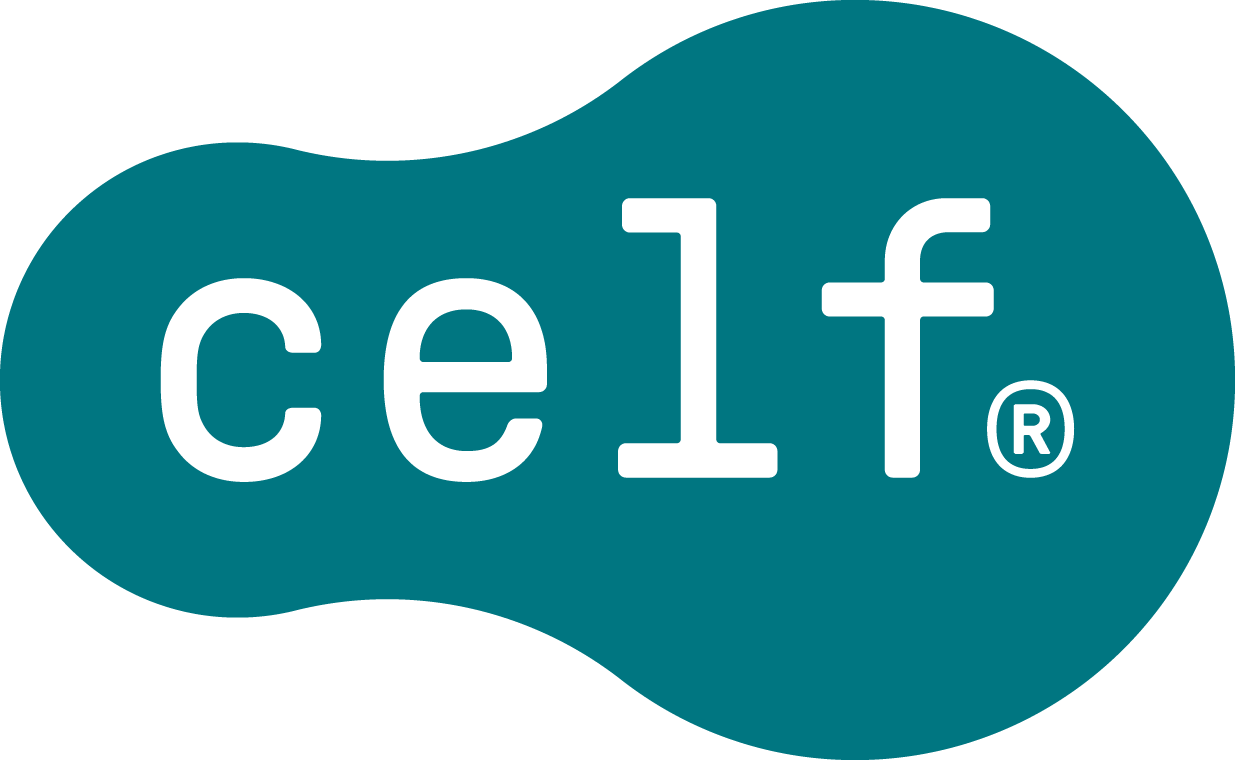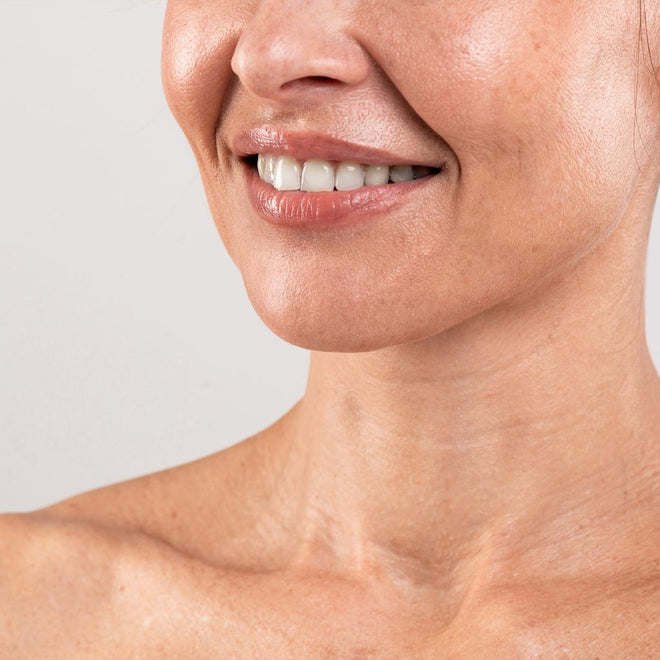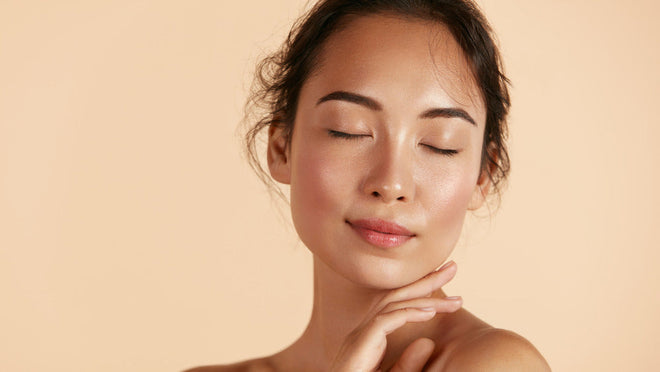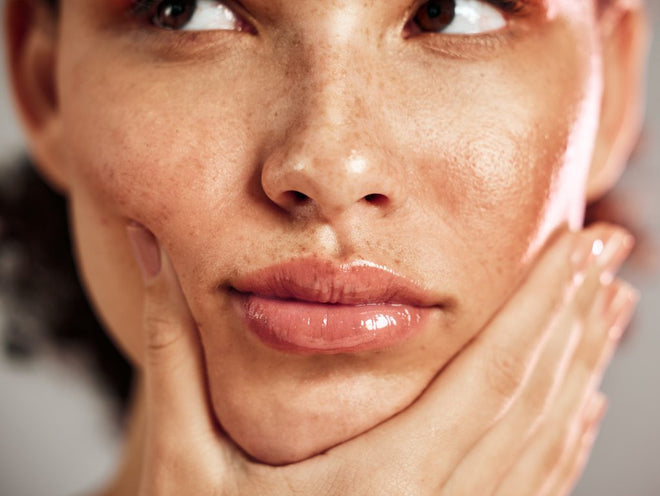Oral Minoxidil for Hair Growth: Full Guide
Table of Contents
The Complete Guide to Oral Minoxidil for Hair Growth
Chapter 1: What is Oral Minoxidil and How Does it Work?
Oral minoxidil is a prescription medication that was created to treat high blood pressure, however, researchers discovered a very interesting side effect: hair regrowth. Unlike Rogaine, oral minoxidil acts systemically rather than topically. When minoxidil is ingested, it opens up blood vessels all over the body, including the blood vessels that supply the scalp. This increase in circulation allows additional oxygen and nutrients to be delivered to hair follicles, effectively ‘waking up’ dormant follicles and kicking them into the anagen (growth) phase.
Oral minoxidil is great in hair restoration because it can help to stimulate widespread, even regrowth (compared to topical applications that are limited to a specific area), inclusive of hairline and temples, which are often resistant to topical treatments. Even when taken at low or adjusted daily doses (0.25–2.5 mg/day), oral minoxidil has shown fantastic results for people experiencing androgenetic alopecia, chronic telogen effluvium, and frontal fibrosing alopecia.
Since oral minoxidil is systemic, it needs to be managed by a provider. We don’t often talk about side effects with low-dose oral minoxidil because they are uncommon, but may include lightheadedness, fluid retention, and even increased facial/body hair.
At CELF, we are all about safe, guided personal journeys—and oral minoxidil is one of many tools in our toolbox when it comes to an integrative and comprehensive approach to restoring hair. By utilising traditional treatments in addition to holistic practices and supportive therapies, such as microvibration, our clients can achieve more than just hair growth; they have the opportunity to grow personally and develop a sense of confidence.
Chapter 2: The Science of Hair Loss—What Are You Dealing With?
Many people associate hair loss and baldness with a cosmetic issue, but hair loss is really about biology. Our hair grows in cycles that have three distinct phases: anagen (active growth), catagen (transition), and telogen (resting and shedding). Hair can start its cyclical growth process for reasons that are intrinsic to our genetics, or because of factors that are outside of our control, like stressors, hormones, inflammation, and nutrient deficiencies that can severely affect the growth phase and prolong the shedding phase.
In the case of androgenetic alopecia (often called pattern hair loss), the hormone dihydrotestosterone (DHT) attaches to the receptor sites in the scalp and shrinks the follicle, producing finer and shorter hairs over time until it disappears altogether. In the case of telogen effluvium, typically preceded by illness, childbirth, or nutritional deficiencies, the follicle is "shocked" into resting prematurely, leading to rapid and diffuse shedding. Other causes of hair thinning are autoimmune diseases (e.g., alopecia areata), thyroid dysfunction, and inflammatory conditions of the scalp.
Recognising these causal factors is key to managing your hair loss. Oral minoxidil does not block DHT, but it prolongs the anagen phase and, in time, allows more follicles to produce stronger, thicker hair.
At CELF, we dive deep into the issues that matter by combining medical science, diagnostic science, and technology-enabled modalities (such as microvibration therapy) to treat not only symptoms but the system. Hair loss is not merely a scalp issue. It is a whole-body signal, and we are here to help you demystify the process scientifically.
Chapter 3: Oral Minoxidil vs. Topical—Comparing Effectiveness
Both oral and topical minoxidil intend to reach the same result—stimulate hair follicles and encourage hair growth- but they do it in unique directions.
Topical minoxidil is the most well-known, as it can be applied on the scalp directly to stimulate local blood flow. Topical minoxidil is generally tolerated, though a few individuals have reported scalp irritation, dryness of the scalp, or allergic reactions to the ingredients in the topical solution, such as propylene glycol.
Oral minoxidil is taken as a pill 1x daily. The pill is absorbed into the bloodstream and delivered systemically. The systemic delivery can be especially useful in patients with widespread thinning and for those who prefer a less stressful experience (not applied daily) or get scalp irritation with topical.
Studies are coming out showing that low doses (as little as 0.25 to 1 mg daily) can work under a physician's supervision. Oral use can have potential systemic side effects such as increased facial hair, water retention, or dizziness, especially in already vasodilatory-sensitive individuals.
This is why we at CELF promote personalised medical oversight. We want to know your hair goals, health history, and lifestyle before making a recommendation. Whether you choose topical, oral, or both, we aim to optimise your results safely and will support that path with adjunct therapies like microvibration therapy that optimise perfusion and absorption.
Chapter 4: How Oral Minoxidil Affects Hair Growth - The Cellular Science
At the cellular level, oral minoxidil's strength is in its ability to activate dormant follicles and prolong the growth phase of the hair cycle. After ingestion, minoxidil is metabolised to minoxidil sulfate, which acts on ATP-sensitive potassium channels around the blood vessels that supply the hair follicle, causing the channels to open. This increases blood flow, nutrient delivery, and oxygenation at the follicular root.
Moreover, oral minoxidil seems to promote normal levels of VEGF (vascular endothelial growth factor), a peptide responsible for inducing new capillary growth, so now there are more blood vessels to perfuse into each follicle, creating a more optimal microenvironment surrounding each follicle, not to mention more optimally supporting the smaller, miniaturised follicles in a low-oxygen environment.
By promoting angiogenesis (the formation of new blood vessels), oral minoxidil creates a thriving ecosystem for the growth of follicles. Better nourished follicles re-enter the anagen phase more rapidly, spend more time there and grow thicker and longer dark hair and often have favourable effects in the often treatment-resistant frontal scalp region.
At CELF, this information guides us at the molecular level in formulating advanced regrowth protocols for collective use.
Our microvibration devices work together uniquely with oral minoxidil to improve circulation, increase lymphatic drainage, and provide nutrients to follicle metabolism. Hair growth is a change you can see, but it starts with changes you can't see at the cellular level. That’s where our science can help you.
Chapter 5: Oral vs. Topical Minoxidil—Which is Right For You?
When it comes to oral vs. topical minoxidil, the decision will depend on your individual hair goals, comfort level with side effects, and lifestyle considerations.
Topical minoxidil has been the standard for hair regrowth since it was first released as a 2% and 5% solution (or foam) and works at the application site. Users have reported some side effects that have including scalp irritation, itching, or flaking. Topical minoxidil must be used daily and with consistency, which takes patience, because it typically takes three to six months of consistent use to see results.
Oral minoxidil accomplishes hair regrowth differently. It delivers an active minoxidil compound into the body systemically, which allows for a more consistent result over the entire scalp (including difficult areas such as the hairline or crown). For example, a 2022 study published showed that low doses of oral minoxidil (i.e. 1.25 mg/day or 2.5 mg/day) had the same significant increases in hair density. Some side effects which could occur with the use of oral minoxidil include hypertrichosis (unwanted facial/body hair), swelling, changes in blood pressure; the doctor is required to monitor you when taking oral minoxidil.
For many people, the choice of oral minoxidil or topical minoxidil will be tolerated, convenient, and effective. Some people use both: oral minoxidil for systemic effects, topical minoxidil for local reinforcement.
At CELF, we believe there are tailored solutions that look at hair health from a comprehensive perspective. Either option with microvibration therapy, which can improve blood flow to the scalp and contribute to hair follicle support, can help you achieve a better outcome!
Chapter 6: Combining Oral Minoxidil with Other Hair Growth Treatments
While oral minoxidil may be effective on its own, when combined with other treatments, this will catapult you on your hair regrowth journey. Dermatologists often recommend it with finasteride, a medication that blocks dihydrotestosterone (DHT), the hormone that shrinks hair follicles. This will address both the vascular and hormonal aspects of your hair issues to help produce thicker and stronger hair.
Other integrative techniques that have recently become available include PRP therapy (platelet-rich plasma), using your body's growth factors to rejuvenate hair follicles, and microneedling, which boosts collagen and helps product absorption. Nutritional supplements (e.g., iron, vitamin D, biotin, and marine collagen) can also be beneficial as they address deficiencies that inhibit the health of the follicle.
The interactions between different approaches create a space where hair has the capabilities to not only regrow but flourish. Oral minoxidil promotes the activity of the follicle internally, while adjunct therapies enrich the external and internal environment.
At CELF, we believe our microvibration therapy enhances this layered therapeutic approach by increasing circulation, enhancing fibroblast activity and improving penetration of topical treatments.
Combining several therapies takes a thoughtful plan; it also takes a medical professional to oversee their use. Yet, if you have a plan in place, you can accelerate your results, keep your progress visible, and find your healthiest hair - a representation of CELF's core belief that beauty is powered by science and self-care.
Chapter 7: Hair Health, Skin Health, and Body Wellness
Hair is more than a beauty accessory; it is an extension of your internal health. Hormonal imbalance, stress, nutritional deficiencies, and even gut health can be exhibited through your hair’s appearance or density. Because of this, hair loss is hardly a singular concern. Real and lasting results involve a holistic pathway that connects hair, skin, and overall wellness.
Oral minoxidil works systemically to improve circulation for nutrient delivery to the hair follicles. Yet, its benefit is maximised when your internal ecosystem (your body's foundation) is well-functioning. Good nutrition, hydration, sleep, stability in blood sugar regulation, and stress management are all necessary factors in hair growth and management. And skin health is tightly woven together as well. For example, if scalp-related conditions are present (like seborrheic dermatitis, chronic inflammation, etc.), this could potentially block progress if left unchecked.
At CELF, we appreciate the beauty of synergy. Our technology, microvibration therapy, is supportive of your holistic pathway by facilitating the improvement of lymphatic flow and cellular oxygenation to both the scalp and the facial skin. We are part of a beauty perspective that is a reflection of internal harmony.
Chapter 8: What Dermatologists & Real Users Say About Oral Minoxidil
Dermatologists have become more accepting of Oral minoxidil as a safe, low-dose option for patients who either could not tolerate topical therapies or have a preference for oral dosing due to convenience. Most clinical studies demonstrate positive results, whereby patients in some studies report the presence of new hair growth in patients within approximately 3-6 months, and show improvements in both density and texture. For these reasons, more hair specialists are suggesting oral minoxidil for women experiencing chronic telogen effluvium (hair loss) and for men experiencing male-pattern hair loss, including when it is prescribed at a low dose (0.25–2.5 mg/day). Many of the patients expressed a preference for the oral dosing approach over the daily mess of the topical treatment, in addition to improved compliance with the oral dosing method.
Social media comments and anecdotal patient reports emphasised overwhelmingly positive experiences associated with their use of oral minoxidil. Many users report that they witnessed the emergence of baby hairs on their temples and frontal hairline, and discussed areas in which regrowth can be very challenging. Unfortunately, several patients experienced mild side effects they attributed to the medication, including increased body hair, lightheadness, mild swelling, or difficulty breathing, emphasising the significance of requiring supervision.
At CELF, we value the voice of experiential practice equally with peer-reviewed literature. By developing the best-known treatments, such as oral minoxidil with evidence-based treatment strategies, we aspire to develop transformational experiences that guide an individual from initial regrowth to a full state of confidence.
Chapter 9: What to Expect — Timeline, Maintenance & Results
Hair growth is a slow process, and hair follicles have biological rhythms to them that must be considered when starting oral minoxidil.
Most users will start to see a reduction in shedding probably around week 6 to 8, and visible improvements in density and volume around 3 to 6 months. It usually takes 9 to 12 months or longer to see the full results, which largely depends on the individual's baseline hair condition, dose, and overall wellness.
It's normal to have a shedding phase at the beginning. This is usually when the weakest hairs will shed off, with the promise of new, stronger hairs regrowing. This is not a sign of ‘failure’, but rather a sign that the hair cycle itself is resetting to its healthy cycle and hair is going into the anagen (growth) phase. We want you to be patient and consistent during this time, Dermatologists encourage users to maintain the course.
Maintenance is key; if you suddenly stop oral minoxidil, your hair will gradually return to the same state it was prior to starting. This makes it a long-term commitment, with most users tolerating low doses over longer periods.
Chapter 10: Conclusion
To conclude, instituting and restoring hair health is a multifaceted process that marries science and personalised practices. If a person chooses to restore hair health via the use of oral minoxidil, topical treatments, or therapies, it is important to understand the science behind hair loss and seek professionals who can create a package of care for your needs.
Oral minoxidil has much promise for the restoration of hair because oral minoxidil improves blood flow to the scalp and prolongs the Anagen (growth) phase of hair follicles. Oral minoxidil can be very effective, but side effects can be serious, where continuous monitoring will be required for side effects such as the development of facial hair, speaking with your doctor if it occurs, lightheadedness and/or fluid retention. I sense that if a person wants severe widespread regrowth of hair before trying minoxidil topical applications, oral minoxidil and supportive treatments would be more beneficial than topical applications.
However, hair restoration is not one size fits all. It can be a complex phase of treatment that often requires a combination of things, including lifestyle changes, dietary adjustments, stress (if applicable) and at times, advanced technologies. Further, in the future, hair restoration will be working towards becoming even more integrated and personalised. At CELF, we are committed to being your trusted partner in this journey, using science, technology, and compassion to help you reach your goals, restore confidence and, ultimately, celebrate your hair journey.
Bonus Content: Tips for Enhancing Hair Growth
In addition to your treatment plan, you may consider changing your lifestyle slightly in these ways to enhance the health and growth of your hair:
-
Eat Nutrient-Rich Foods
A special focus on foods containing vitamins A, C, D, E and the B-complex vitamins and zinc, iron and omega-3 fatty acids. All these will support healthy hair follicles. -
Manage Stress
High stress levels can lead to triggers of telogen effluvium (hair loss). Adding some stress management strategies, such as yoga, meditation, or focusing on sleep (and the right amount of sleep), can allow a healthy environment for your scalp. -
Scalp Dynamics
A scalp massage stimulates the scalp, allowing for better circulation and oxygenating the hair follicles. Use oils found in nature, such as rosemary oil and peppermint oil, to promote hair growth. -
Hydration
Your hydration levels will also contribute to your scalp and skin health overall. Drinking a sufficient amount of water gives the hair follicles the necessary nutrients to promote an optimal scalp and promote hair growth. -
Health Follow-Up
Regularly check in with your health care provider to review the progress of your treatment plan and to keep track of any side effects or concerns.
FAQs
1. Does oral minoxidil really regrow hair?
Yes, oral minoxidil has shown promising results in regrowing hair in both men and women. It works by increasing blood flow to hair follicles and prolonging the hair growth phase. While it’s not FDA-approved for hair loss (topical is), many dermatologists prescribe it off-label with success.
2. How long does it take for oral minoxidil to grow hair?
You may start seeing visible results from oral minoxidil within 3 to 6 months of consistent use. However, optimal hair regrowth may take up to 12 months. Initial shedding is normal and typically resolves as the growth phase kicks in.
3. What are the downsides or side effects of oral minoxidil?
Common side effects include increased body hair (hypertrichosis), fluid retention, low blood pressure, and dizziness. Less common but serious risks involve heart palpitations or chest pain. Always take the medication under medical supervision to monitor for adverse effects.
4. Should men use 2% or 5% minoxidil?
Topical 5% minoxidil is usually recommended for men, as it’s more effective than 2%. However, oral doses vary. Men are often prescribed 1.25–5 mg daily, depending on tolerance and response. The choice between topical or oral should be based on lifestyle, effectiveness, and medical advice.
5. Is 2.5 mg oral minoxidil effective for hair loss?
Yes, minoxidil 2.5 mg tablets are commonly prescribed and can be effective for both men and women with hair loss. It provides a good balance between effectiveness and minimizing side effects, especially in female patients.
6. Can women take oral minoxidil for hair growth?
Yes, women can take oral minoxidil, usually at lower doses (0.25 mg to 2.5 mg daily). It's often prescribed off-label for female pattern hair loss or chronic telogen effluvium. Many women see noticeable improvements with consistent use under medical guidance.
7. What’s the best dose of oral minoxidil for female hair loss?
The typical oral minoxidil dose for women starts at 0.25 mg to 1.25 mg daily. Some dermatologists may increase it to 2.5 mg, depending on the severity of hair loss and patient tolerance. Lower doses reduce the risk of side effects like facial hair growth.
8. Are there before and after results from oral minoxidil?
Yes, many users report significant improvements in hair thickness, density, and reduced shedding within 3–12 months. You can find before-and-after photos in clinical reviews and hair forums, but results vary based on genetics, dosage, and duration of use.




